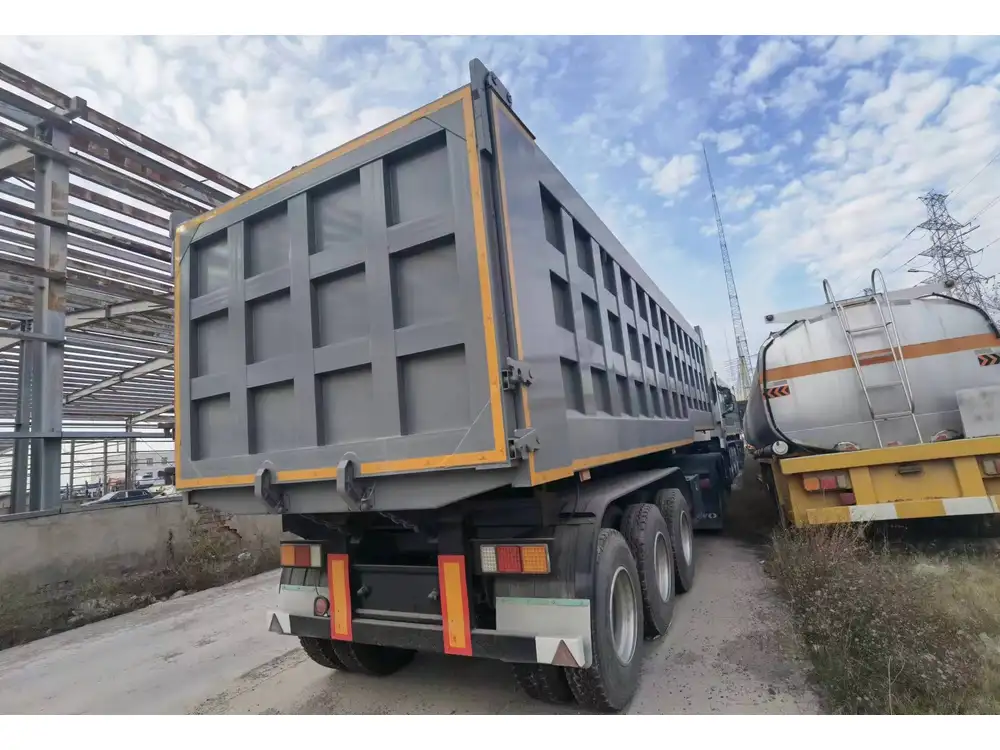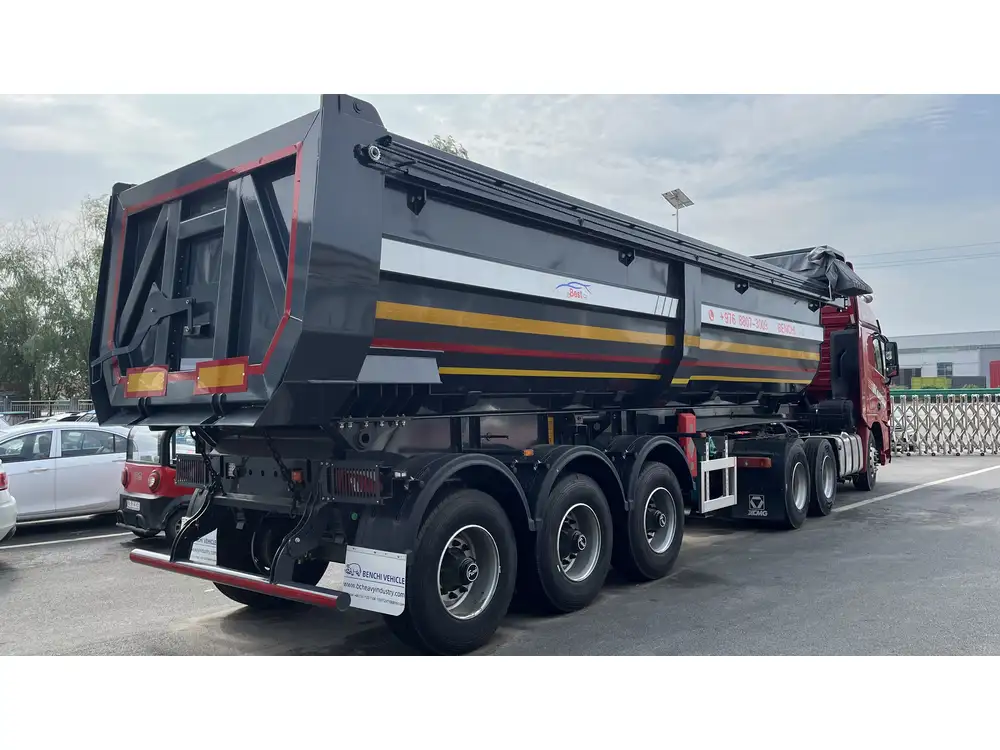Acquiring a used flatbed trailer can be a strategic move for businesses seeking to enhance their logistics capabilities without the hefty price tag that often accompanies brand-new units. However, navigating the myriad options available requires a discerning eye and a comprehensive understanding of various key factors. This guide is tailored to ensure that you are equipped with the necessary knowledge to make an informed purchase, ultimately steering your investment toward reliability and long-term utility.
Understanding Flatbed Trailers: Fundamentals and Functions
Before delving into the specifics of what to look for when purchasing a used flatbed trailer, it’s essential to grasp the basic functions and types of flatbed trailers.
Types of Flatbed Trailers
| Type | Description |
|---|---|
| Standard Flatbed | Typically features a flat, open deck design and is versatile for various loads. |
| Drop Deck | Lowered deck area for transporting taller loads legally without exceeding height restrictions. |
| Step Deck | A two-level design that allows for improved loading capabilities while maintaining height regulations. |
| Heavy Haul Flatbed | Specifically engineered to carry significant loads, providing enhanced structural integrity and reinforcements. |

Key Features of Flatbed Trailers
- Material Construction: Commonly built with steel or aluminum, which affects weight, durability, and maintenance.
- Axle Configuration: The number and placement of axles impact load capacity and stability.
- Deck Surface: May be wood, metal, or composite, affecting traction and durability.
Understanding these fundamentals will provide a solid foundation for evaluating potential purchases.
Initial Considerations: Assessing Your Requirements
Before starting your search, consider your specific hauling needs. This involves evaluating the type of freight you will transport, the typical load weights, dimensions, and the routes you plan to traverse. These factors will inform the specifications you should prioritize in a used flatbed trailer.
Common Uses for Flatbed Trailers
- Transportation of heavy equipment (construction, forestry, etc.)
- Hauling large, non-containerized loads
- Delivering agricultural products
- Specialized freight transportations such as vehicles and large machinery

Critical Aspects to Inspect in a Used Flatbed Trailer
As you embark on the journey of purchasing a used flatbed trailer, there are several critical aspects to scrutinize. Each of the following elements plays a vital role in ensuring that you acquire a unit that meets your operational needs without incurring unnecessary repair costs.
1. Physical Condition
Inspecting the physical condition of the trailer is perhaps the most obvious, yet crucial, step in your evaluation process.
Exterior Inspection
- Chassis and Frame: Look for cracks, rust, or signs of bending. A strong frame is essential for load-bearing capacity.
- Deck Surface: Check for rotting or damaged wood if applicable. Metal surfaces should be free of major rust or corrosion.
- Wheels and Tires: Inspect for worn tread, uneven wear patterns, and proper inflation.

Interior Inspection
- Underbody: Examine for rust accumulation and structural flaws that could indicate severe wear.
- Brake Lines and Electrical Components: Ensure these are intact, as they are crucial for safe operation.
2. Load Capacity and Specifications
Not all flatbed trailers are created equal; understanding the varying load capacities is vital.
Key Specifications to Review
| Specification | Importance |
|---|---|
| Gross Vehicle Weight Rating (GVWR) | Indicates the maximum legal load, including trailer weight. |
| Payload Capacity | Total weight the trailer can carry safely, often influenced by design. |
| Dimensions | Length and width should suit your typical loads. |
Ensure that the trailer’s specifications align with your hauling requirements, as overloading can lead to swift wear and legal complications.

3. Maintenance and Service History
A thorough examination of maintenance records can offer insights into the trailer’s past performance and upkeep.
What to Look For
- Service Records: Regularly maintained trailers will often have documentation showcasing timely servicing and repairs.
- Past Repairs: Note any significant repairs that could indicate prior issues, particularly with the suspension or braking system.
4. Tire Condition and Wheel Alignment
Tires hold the trailer to the road; thus, their condition is paramount.

Key Points
- Check the tread depth for wear—overly worn tires can compromise safety and fuel efficiency.
- Ensure alignment: Misalignment can lead to uneven tire wear and unpredictable handling.
| Tire Condition Assessment | Indicators of Issues | Recommended Action |
|---|---|---|
| Worn tread | Reduced grip, potential for blowouts | Replacement or balancing |
| Cracks or bulges | Structural weakness | Immediate replacement |
| Uneven wear | Possible alignment issues | Realignment, suspension check |
5. Braking and Suspension Systems
Safety and performance are fundamentally tied to the braking and suspension systems of a flatbed trailer.
What to Assess
- Brake Functionality: Test if the brake system is responsive and intact during your inspection.
- Suspension Condition: Inspect for excessive bounce or sagging; these could indicate underlying issues needing repair.

6. Legal Compliance and Registration
Do not overlook the legal aspects of trailer ownership, including compliance with local regulations.
Key Compliance Checks
- Ensure the trailer has the necessary VIN (Vehicle Identification Number) and that it matches registration documents.
- Verify that it meets local DOT (Department of Transportation) requirements, particularly if modifications have been made.
Evaluating Price and Value
Pricing can vary significantly based on condition, features, and market demand. To ensure you make a wise financial decision:

1. Comparative Market Analysis
Research similar trailer models and their conditions to assess average market values. Websites like Kelley Blue Book and local classified ads can provide baseline figures.
2. Budget Considerations
Consider additional costs, such as:
- Registration fees
- Insurance
- Potential repairs or upgrades post-purchase
| Cost Factors | Estimates |
|---|---|
| Registration | Varies by state |
| Insurance | $800 – $1500 annually, depending on use |
| Repairs and Upgrades | $500 – $3000 or more, contingent on condition |
Finalizing Your Purchase: An Informed Decision
After you have thoroughly inspected the used flatbed trailer and conducted due diligence concerning pricing and compliance, you’ll be in a position to negotiate.

1. Negotiation Tactics
- Factor in any repairs needed into your offer.
- Leverage market data to support your stance on pricing.
2. Test Drive
Whenever possible, conduct a test drive. Not only does this provide insight into the trailer’s performance, but it also allows for a practical evaluation of braking and handling characteristics.
Conclusion: A Smart Investment
Purchasing a used flatbed trailer can be a rewarding investment, provided that you approach the transaction with diligence and thorough understanding. By focusing on key areas such as physical condition, specifications, maintenance history, and legal compliance, you can make a well-informed decision that not only meets your operational needs but also serves as a reliable asset for your business. The time and effort you invest in proper evaluation will pay off in the form of reduced operational disruptions and enhanced logistics efficiency. Each flatbed trailer is a blend of engineering and functionality, and finding the right one can transform your hauling capabilities.
By adhering to this guide, you will enhance your confidence in your decision-making process. So, evaluate wisely, negotiate smartly, and drive forward with assurance in your newly acquired used flatbed trailer.



